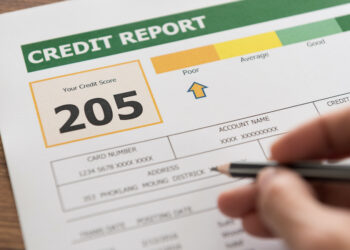Refinancing—often called “remortgaging” in some regions—can be an effective strategy to lower your monthly mortgage payments, shorten your loan term, or tap into your home’s equity. For U.S. homeowners, a refinance may help secure a better interest rate, remove private mortgage insurance (PMI), or consolidate debt. However, not all refinance solutions are created equal. In this guide, we’ll explore the top refinance options, leading lenders, and tips to help you secure the best deal possible.
Disclaimer: This content is for informational purposes only and does not constitute financial advice. Always consult a qualified mortgage professional to discuss your unique situation.
1. Why Consider Refinancing Your Mortgage?
Refinancing your current mortgage involves replacing it with a new loan—usually with updated terms, rates, or a different loan length.
- Lower Interest Rate: A drop of even half a percentage point can lead to significant savings over the life of your loan.
- Reduced Monthly Payments: Lower interest rates or a longer loan term can decrease monthly costs.
- Shorter Loan Term: Switching from a 30-year to a 15-year mortgage may help you build equity faster and pay less interest overall.
- Cash-Out Option: If you’ve built up home equity, a cash-out refinance can provide funds for home improvements or debt consolidation.
Learn more: Visit the Consumer Financial Protection Bureau’s Refinance Guide for a comprehensive overview of refinancing benefits and potential pitfalls.
2. Common Refinance Types
Rate-and-Term Refinance
- Purpose: Replace your existing mortgage with a new one featuring different rates or terms.
- Ideal For: Homeowners looking to lower interest, reduce monthly payments, or change the loan duration.
- Key Benefits: No extra cash is taken out; focuses solely on securing better loan conditions.
Cash-Out Refinance
- Purpose: Allows you to borrow against your home’s equity, replacing the old mortgage with a higher loan amount.
- Ideal For: Funding home renovations, debt consolidation, or other significant expenses.
- Key Benefits: Potentially lower interest compared to personal loans, but increases your principal balance.
Streamline Refinance (FHA, VA, and USDA Loans)
- Purpose: Simplified refinance process for government-backed loans (e.g., FHA streamline, VA IRRRL).
- Ideal For: Borrowers with existing government-insured mortgages seeking reduced paperwork and minimal appraisal requirements.
- Key Benefits: Faster approval, reduced closing costs, and no income verification in some cases.
3. Leading Refinance Lenders in the U.S.
Rocket Mortgage (by Quicken Loans)
- Website: Rocket Mortgage
- Key Features: Online application, real-time rate updates, wide variety of loan options.
- Ideal For: Tech-savvy borrowers wanting a digital mortgage experience and quick pre-approval.
Bank of America
- Website: Bank of America Refinance
- Key Features: Competitive rates, comprehensive financial services, relationship discounts for existing customers.
- Ideal For: Existing Bank of America clients who can benefit from loyalty perks.
Chase
- Website: Chase Mortgage Refinance
- Key Features: In-branch support, adjustable-rate mortgages (ARMs), jumbo loan options.
- Ideal For: Borrowers preferring a large traditional bank with local branch availability.
Wells Fargo
- Website: Wells Fargo Home Refinance
- Key Features: Variety of loan programs, dedicated mortgage specialists, streamlined online tools.
- Ideal For: Homeowners who value a blend of digital convenience and in-person consultations.
LoanDepot
- Website: loanDepot
- Key Features: “Mello Smartloan” technology for faster closing, variety of FHA and VA loans.
- Ideal For: Tech-forward borrowers needing government-backed streamline refinancing solutions.
Tip: Always compare multiple lenders. Even a slight difference in APR (Annual Percentage Rate) can save you thousands over the life of your loan.
4. Preparing for a Smooth Refinance
Check Your Credit Score
Higher credit scores typically lead to better rates. You can review your reports at AnnualCreditReport.com and check your score via Credit Karma or similar services.Calculate Home Equity
Lenders often prefer homeowners to have at least 20% equity for the best rates, although there are low-equity and government-backed options available.Gather Documentation
Be prepared with pay stubs, tax returns, and proof of assets. Streamline refinances may require fewer documents, but conventional refinances often require full financial verification.Compare Costs
Request Loan Estimates from different lenders to compare interest rates, closing costs, and fees (origination, appraisal, title search).
Need help budgeting? Check out the CFPB’s Mortgage Refinance Calculator to estimate potential savings.
5. Quick Alternatives to Traditional Refinancing
Home Equity Loan
- How It Works: Borrow a lump sum based on the equity in your property.
- Pros: Fixed interest rates, predictable monthly payments.
- Cons: Separate monthly payment in addition to your existing mortgage.
Home Equity Line of Credit (HELOC)
- How It Works: Revolving line of credit secured by your home’s equity.
- Pros: Flexibility in borrowing only what you need, interest charged only on used portion.
- Cons: Variable interest rates can lead to unpredictable monthly payments.
Mortgage Modification
- How It Works: Lender modifies your existing mortgage terms due to financial hardship.
- Pros: Potential to lower payments without the complexity of a full refinance.
- Cons: Not always available; may negatively impact your credit.
Pros and Cons of Common Refinance Options
| Refinance Type | Pros | Cons |
|---|---|---|
| Rate-and-Term | Lower interest rates, reduce monthly payments, shorter term | May incur closing costs, requires sufficient equity |
| Cash-Out | Access home equity for major expenses or debt consolidation | Higher overall loan balance, potential risk if home value declines |
| Streamline (FHA/VA/USDA) | Less paperwork, reduced fees, easier qualification | Only applies to existing government-backed mortgages |
| Home Equity Loan (alternative) | Fixed rate, lump sum, simpler budgeting | Adds a second mortgage payment, additional closing costs |
| HELOC (alternative) | Flexible withdrawals, pay interest only on used funds | Variable interest rates, risk of owing more if rates rise |
Tips for Getting the Best Refinance Deal
Improve Your Credit Score
Pay down revolving debt and correct any errors on your credit report.Compare Lenders
Don’t settle for the first offer—request quotes from at least three lenders or use comparison sites like LendingTree.Negotiate Closing Costs
Many fees are negotiable, such as application or origination fees.Lock Your Rate
Once you find a favorable rate, consider locking it in to avoid market fluctuations.Time It Right
Keep an eye on market trends—refinancing often makes the most sense when rates drop below your current mortgage rate by about 0.5% or more.
Conclusion: Finding the Best Remortgage (Refinance) Solution
Refinancing can be a strategic move to lower monthly payments, shorten your loan term, or access your home’s equity. By understanding the types of refinance, comparing top lenders, and preparing your finances in advance, you can position yourself for a successful and cost-effective remortgage experience in the U.S.
Start here:
With the right plan in place, your mortgage refinance could offer substantial savings and set you on a smoother path toward financial stability.





